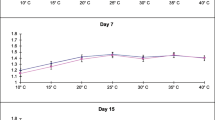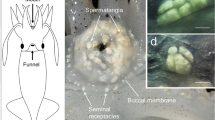Abstract
CERTAIN isolated muscle and heart preparations of marine invertebrates are highly sensitive to acetylcholine, to 5-hydroxytryptamine (enteramine, serotonin), or to both of these substances. Bacq1 was the first and Ambache and Sawaya2 among the more recent to demonstrate the sensitivity to acetylcholine of muscle strips from holothurians (Echinodermata). Inhibition of heart-beat of the bivalve mollusc, Venus mercenaria, was first used by Welsh3 for the quantitative estimation of acetylcholine in tissue extracts. Recently, the same heart has been found to respond by increases in amplitude and frequency to low concentrations of 5-hydroxytryptamine4. Earlier, it had been reported5,6 that certain molluscan hearts had a low threshold to 5-hydroxytryptamine or tissue extracts containing this substance. At the Marine Biological Laboratory, during the summer of 1953, the need arose for the quantitative estimation of acetylcholine and 5-hydroxytryptamine in certain tissues. Several species of echinoderms and molluscs from the Plymouth region were secured, and isolated muscle and heart preparations were screened for their suitability in bioassay of these substances. Available holothurians were Holothuria nigra, Cucumaria normani, C. elongata, and a single specimen of Thyone sp. Pieces or entire lengths of the longitudinal muscle bands were dissected free from the inner body wall and set up in the manner commonly used for muscle strips during recording of contractions. In the case of C. normani the peristomal (pharyngeal) retractor muscles were also tried. While all these preparations contracted in low concentrations of acetylcholine, especially after eserinization, the difficulties that were encountered by earlier workers1,7 who had used other species of holothurians were obvious. Chief among these were spontaneous contractions, tendency to contract and remain contracted after eserine, and sensitivity to mechanical stimulation after eserine. This last was especially marked in the muscles from the single specimen of Thyone which, otherwise, were most promising since they were not spontaneously active.
This is a preview of subscription content, access via your institution
Access options
Subscribe to this journal
Receive 51 print issues and online access
$199.00 per year
only $3.90 per issue
Buy this article
- Purchase on Springer Link
- Instant access to full article PDF
Prices may be subject to local taxes which are calculated during checkout
Similar content being viewed by others
References
Bacq, Z. M., Arch. Int. Physiol., 49, 20 (1939).
Ambache, N., and Sawaya, P., Physiol. Comp. et Oecol., 3, 53 (1953).
Welsh, J. H., J. Neurophysiol., 6, 329 (1943).
Welsh, J. H., Arch. Exp. Path. u. Pharmakol., 219, 23 (1953).
Erspamer, V., and Ghiretti, F., J. Physiol., 115, 470 (1951).
Bacq, Z. M., Fischer, P., and Ghiretti, F., Arch. Int. Physiol., 60, 165 (1951).
Moussatché, H., Rev. Brasil. Biol., 9, 525 (1949).
Welsh, J. H., and Taub, Rae, Biol. Bull., 95, 346 (1948).
Luduena, F. P., and Brown, T. G., jun., J. Pharmacol., 105, 232 (1952).
Welsh, J. H., and Taub, Rae, Brit. J. Pharmacol., 8, 327 (1953).
Welsh, J. H. (unpublished).
Prosser, C. L., Biol. Bull., 78, 92 (1940).
Author information
Authors and Affiliations
Rights and permissions
About this article
Cite this article
WELSH, J. Marine Invertebrate Preparations useful in the Bioassay of Acetylcholine and 5-Hydroxytryptamine. Nature 173, 955–956 (1954). https://doi.org/10.1038/173955a0
Issue Date:
DOI: https://doi.org/10.1038/173955a0
This article is cited by
-
Effect of 5-hydroxytryptamine and related compounds on the isolated heart ofPila globosa (Gastropoda: Mollusca)
Proceedings / Indian Academy of Sciences (1968)
-
Effects of Synthetic Eledoisin and Bradykinin on Certain Invertebrate Preparations and the Isolated Frog Heart
Nature (1966)
-
�ber die Wirkung des Serotonins auf die Froschlunge
Die Naturwissenschaften (1960)
-
A central nervous system effect of a non-hallucinatory lysergic acid derivative
Experientia (1958)
Comments
By submitting a comment you agree to abide by our Terms and Community Guidelines. If you find something abusive or that does not comply with our terms or guidelines please flag it as inappropriate.



